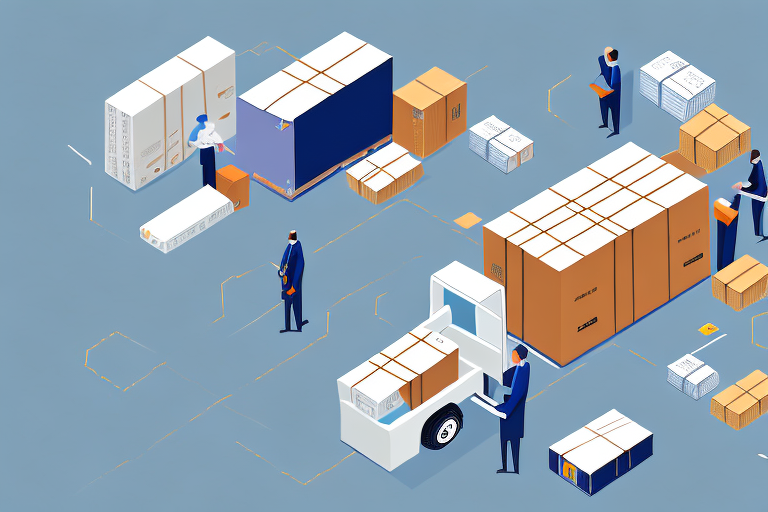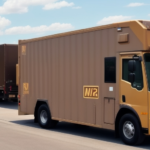Importance of Safe Shipping for Courier Packages
Safe shipping practices are fundamental to maintaining the integrity of courier packages during transit. According to the UPS Logistics Report, improper handling can lead to a significant increase in damaged goods, affecting both customer satisfaction and business reputation. Proper packaging and handling not only prevent damage, leakage, or loss but also ensure that packages arrive at their destinations safely and on time.
Damaged packages can result in added expenses, lost revenue, and tarnished brand reputation. For businesses, this can mean the loss of repeat customers and negative reviews, which are detrimental in today’s competitive market. Additionally, individuals shipping personal items such as important documents, sentimental gifts, or fragile electronics face the risk of irreplaceable losses. Therefore, implementing safe shipping practices is essential for both businesses and personal shipments.
Types of Packages Requiring Special Care
Fragile Items
Fragile items like glassware, artwork, and electronics require additional padding and protection. Studies show that properly cushioned packages have a 30% lower risk of damage during transit (ResearchGate). Using materials such as bubble wrap, foam peanuts, and double-walled boxes can significantly enhance the safety of these items.
Perishable Goods
Perishable items, including food, plants, and live animals, necessitate specialized packaging and may be subject to specific shipping restrictions. According to the FDA, maintaining appropriate temperature control and timely delivery is crucial to prevent spoilage and ensure safety.
Hazardous Materials
Shipping hazardous materials like chemicals, batteries, or explosives requires strict adherence to safety guidelines. The CDC outlines specific packaging requirements and documentation to prevent accidents and ensure compliance with federal regulations.
Oversized and Heavy Items
Oversized or heavy packages demand special equipment and handling to ensure safe loading and unloading. Communicating the weight and dimensions accurately to the courier can prevent mishandling and reduce the risk of injury or damage.
Valuable Items
Items such as jewelry, antiques, or collectibles require enhanced security measures. Insuring these packages and using tracking services can provide additional protection and peace of mind.
Essential Packaging Materials and Tools
Proper packaging materials are vital for the safe transport of courier packages. Essential items include:
- Sturdy cardboard boxes
- Padded envelopes
- Packing tape
- Bubble wrap
- Foam peanuts
- Packing paper
- Shrink wrap
- Scissors, box cutters, markers, and measuring tape
For larger items, tools such as pallet jacks or utility carts are necessary to facilitate safe transportation and handling.
Additionally, considering the environmental impact of packaging materials is increasingly important. Opting for recyclable or biodegradable materials can help reduce waste and minimize your carbon footprint. The EPA provides guidelines on sustainable packaging practices.
Packing, Labeling, and Marking Best Practices
Proper Packing Techniques
- Place smaller items inside a larger box to provide extra cushioning.
- Avoid overpacking or adding excessive weight to the box.
- Use materials like bubble wrap, newspaper, or packing peanuts to fill empty spaces.
- Secure all items with packing tape or additional packing materials.
- Wrap individual items if shipping multiple items together to prevent contact damage.
Clear labeling is equally important. Ensure the recipient’s name, address, and contact information are prominently displayed to avoid delivery issues. Including a return address is also advisable in case the package cannot be delivered.
Effective Labeling and Marking
Accurate labeling and marking are critical for timely and precise delivery. Include the tracking number or barcode to enable real-time monitoring. Labels such as "Fragile" or "Handle with Care" should be used when appropriate.
Use waterproof markers or durable labels to maintain legibility throughout the shipping process. Avoid abbreviations or unclear markings that might confuse the courier or recipient.
For more information on labeling requirements, refer to the USA.gov Shipping Labels Guide.
Choosing the Right Shipping Method and Carrier
Selecting the Appropriate Shipping Method
When choosing a shipping method, consider factors such as size, weight, destination, and delivery timeframe. Options include ground, express, and international shipping, each with different delivery times and costs.
For time-sensitive shipments, express services are recommended to ensure prompt delivery. For larger or heavier packages, freight shipping may be more appropriate than traditional courier services.
Carrier Selection Criteria
Selecting a reliable carrier is essential for ensuring timely and safe deliveries. Factors to consider include:
- Safety record and reputation
- Coverage area and network
- Range of shipping options
- Experience with specific types of shipments
- Customer service and support
Comparing carriers based on these criteria can help you choose the one that best meets your shipping needs. Resources like the JD Power Courier Service Ratings can provide valuable insights.
Understanding Shipping Regulations and Tracking
Shipping Regulations and Restrictions
Compliance with shipping regulations is mandatory, especially when dealing with hazardous materials or restricted items. Regulations may include specific packaging requirements, labeling, and necessary documentation.
Failure to adhere to these regulations can result in delays, fines, or confiscation of the package. The U.S. Customs and Border Protection provides comprehensive guidelines on international shipping regulations.
Tracking and Monitoring Shipments
Effective tracking ensures visibility and accountability throughout the shipping process. Most carriers offer online tracking tools that provide real-time updates on the package’s status and location.
Additional services like signature confirmation can enhance security, especially for high-value items. Insuring shipments can provide protection against loss or damage, offering peace of mind.
Utilizing these tracking tools can help prevent loss or theft and ensure that packages are delivered as expected.
Handling Damaged or Lost Packages and Ensuring Timely Delivery
Addressing Damaged or Lost Packages
In the event of damage or loss, prompt action is necessary to resolve the issue. Notify the carrier immediately and provide any required documentation to file a claim. If the package is insured, contact the insurance provider to initiate the claim process.
For lost packages, filing a complaint with relevant shipping authorities or regulatory agencies may be necessary. Implementing preventive measures, such as proper packaging and choosing reliable carriers, can minimize these risks.
Ensuring Timely Delivery
Timely delivery is crucial, especially for time-sensitive shipments. Strategies to ensure prompt delivery include:
- Using express shipping services for urgent packages.
- Requesting priority handling from the carrier.
- Allowing sufficient time for transit based on the carrier’s estimates.
- Properly packaging and labeling to avoid delays.
Planning ahead and understanding the carrier’s transit times can help mitigate unexpected delays.
Best Practices for Handling Hazardous Materials During Shipping
Shipping hazardous materials requires strict adherence to safety guidelines to prevent accidents and ensure compliance with regulations. Best practices include:
- Using specialized packaging materials such as hazardous waste bags or sturdy containers.
- Clearly labeling packages with hazard warning labels.
- Ensuring all necessary documentation and permits are in place.
- Complying with carrier-specific regulations and federal guidelines.
Consulting with hazardous materials experts or shipping authorities can provide additional guidance and ensure safe transport.
Packaging and Shipping Supplies You Need to Have on Hand
Maintaining a well-stocked inventory of packaging and shipping supplies is essential for efficient and safe shipping operations. Key supplies include:
- Boxes of various sizes
- Bubble wrap and packing peanuts
- Packing tape and dispensers
- Packing paper and foam inserts
- Shipping labels and markers
- Specialized supplies for hazardous or perishable items
Having these supplies readily available can streamline the packing process and ensure that packages are prepared correctly for transit.
Regularly reviewing and replenishing your inventory can prevent last-minute shortages and ensure that you are always prepared for shipping needs.
Conclusion
Implementing safe shipping practices is crucial for ensuring that courier packages are delivered securely and on time. Proper packaging, accurate labeling, and selecting the right shipping methods and carriers can prevent damage, loss, and delays, thereby protecting your business reputation and personal items. By adhering to the guidelines and best practices outlined in this article, you can enhance the efficiency and reliability of your shipping processes while complying with all necessary regulations and restrictions.




















